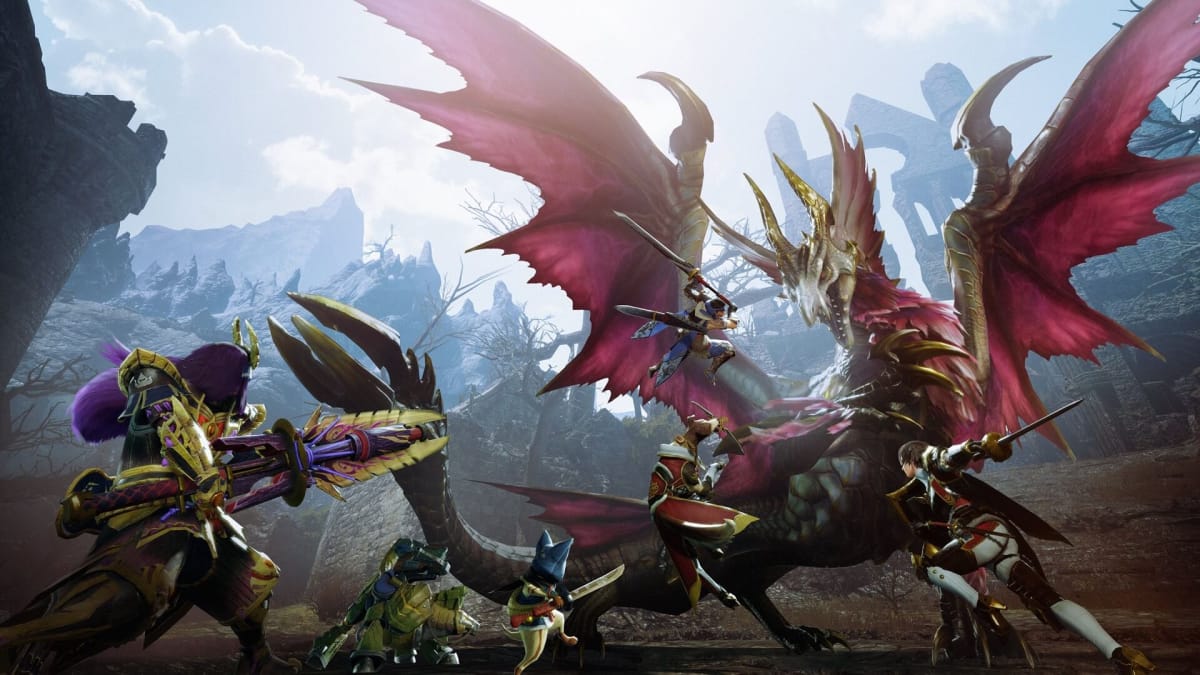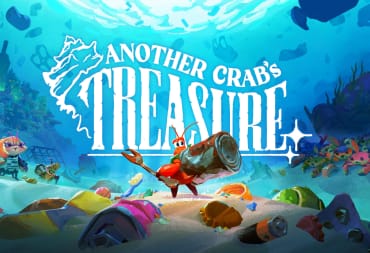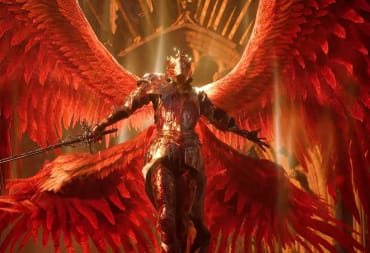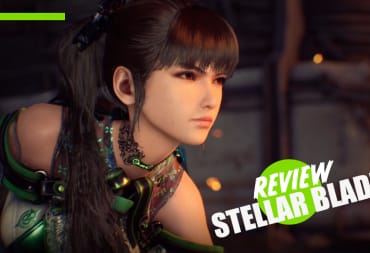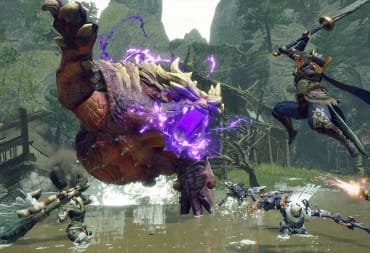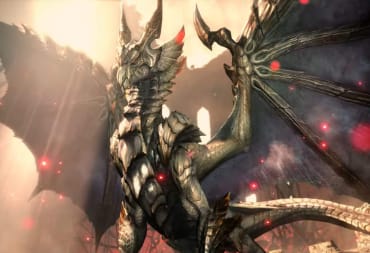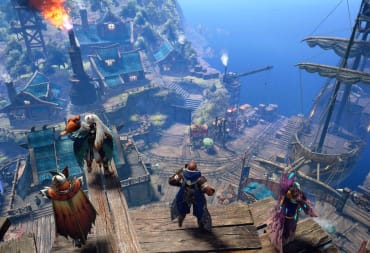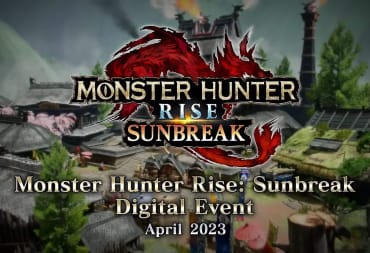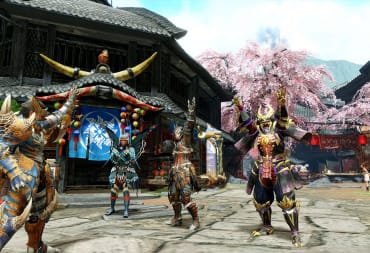Despite spending a good amount of time with Monster Hunter Rise, I still have a hard time deciding whether I enjoy this style of Monster Hunter more than the more methodical gameplay of older entries. While it can be fun to launch myself around the game’s smaller maps and take on monsters with a powerful set of moves, the lack of difficulty and any real endgame content makes it feel somewhat unmemorable.
This is why I was excited to see what Monster Hunter Rise: Sunbreak would bring to the table. As a brand new expansion full of more monsters to hunt and areas to explore, it was the perfect chance to fix Rise’s stale post-story gameplay loop. I’m happy to say that Sunbreak does at least attempt to tackle some of the base game’s shortcomings, though it doesn’t quite go far enough when it comes to improvements.
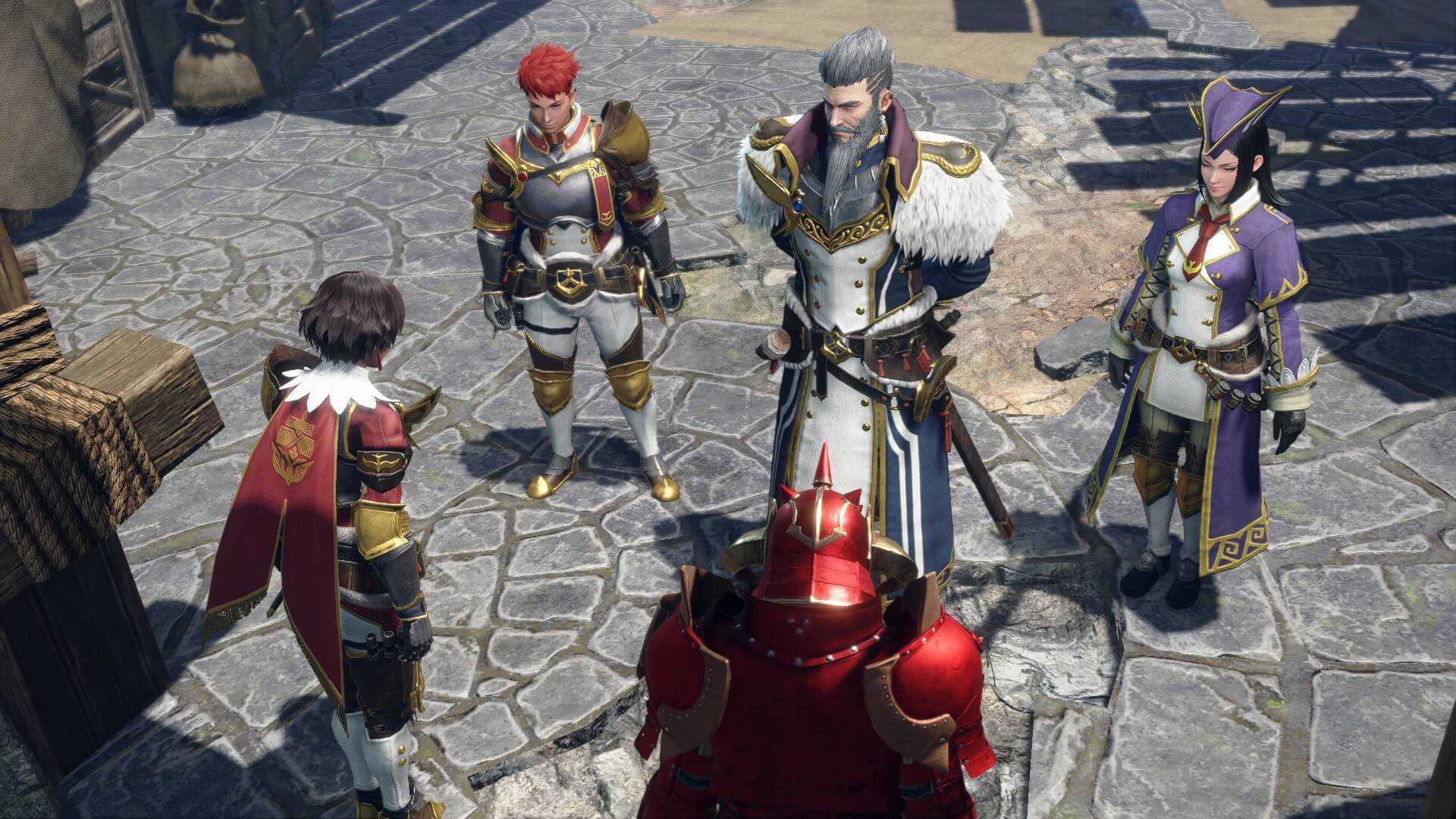
New Lands, Similar Story
Monster Hunter Rise: Sunbreak takes your hunter — now known as the “Fierce Flame of Kamura” after their triumph over The Rampage — to Elgado, where monsters have started to act abnormally. You spend your time there helping out Elgado Outpost’s Admiral, hunting alongside some of its residents as you find the truth behind a potential new threat.
As with the base game, Sunbreak doesn’t spend a whole lot of time on its story. There are some short cutscenes here and there, but the expansion is more interested in getting you straight to hunting. This does make the decision to add NPC companion quests (more on this later) an odd choice since you spend little time with most characters, though Monster Hunter has always been about its namesake rather than a deep story.
The hunting itself has mostly remained unchanged, taking you through a number of locations — including the newly added Jungle and Citadel — to face off against an array of large monsters. There's no contending with any additional area gimmicks or other mechanics. This is still the same straightforward hunting present in Rise, with item management being mostly non-existent at this point. Both new maps are decent additions to the existing line-up, with the Jungle acting as a nice throwback to Monster Hunter 2. They're also quite easy to get around, and you only really need to explore when searching for hidden collectibles.
Meanwhile, the Citadel is where you’ll be facing off against most of Sunbreak’s brand new monsters, including the elder dragon Malzeno. Malzeno seems to be Capcom’s answer to the overpowered abilities of hunters in base Monster Hunter Rise, with its teleports and fast strikes requiring quicker reflexes from players. It’s a solid addition to the series lineup of flagship monsters — even more so than the actual final boss — though Sunbreak’s roster of new monsters as a whole is somewhat small.
Crab-type monsters make a return as another nod to Monster Hunter 2, though they feel a little out of place with the faster gameplay of Rise. Monster Hunter Frontier’s Espinas is also present, which hopefully indicates that more monsters from the Asia-exclusive games will make their way over in future updates. What's here at launch isn't too bad, but it doesn't offer too much challenge when going through Master Rank quests.
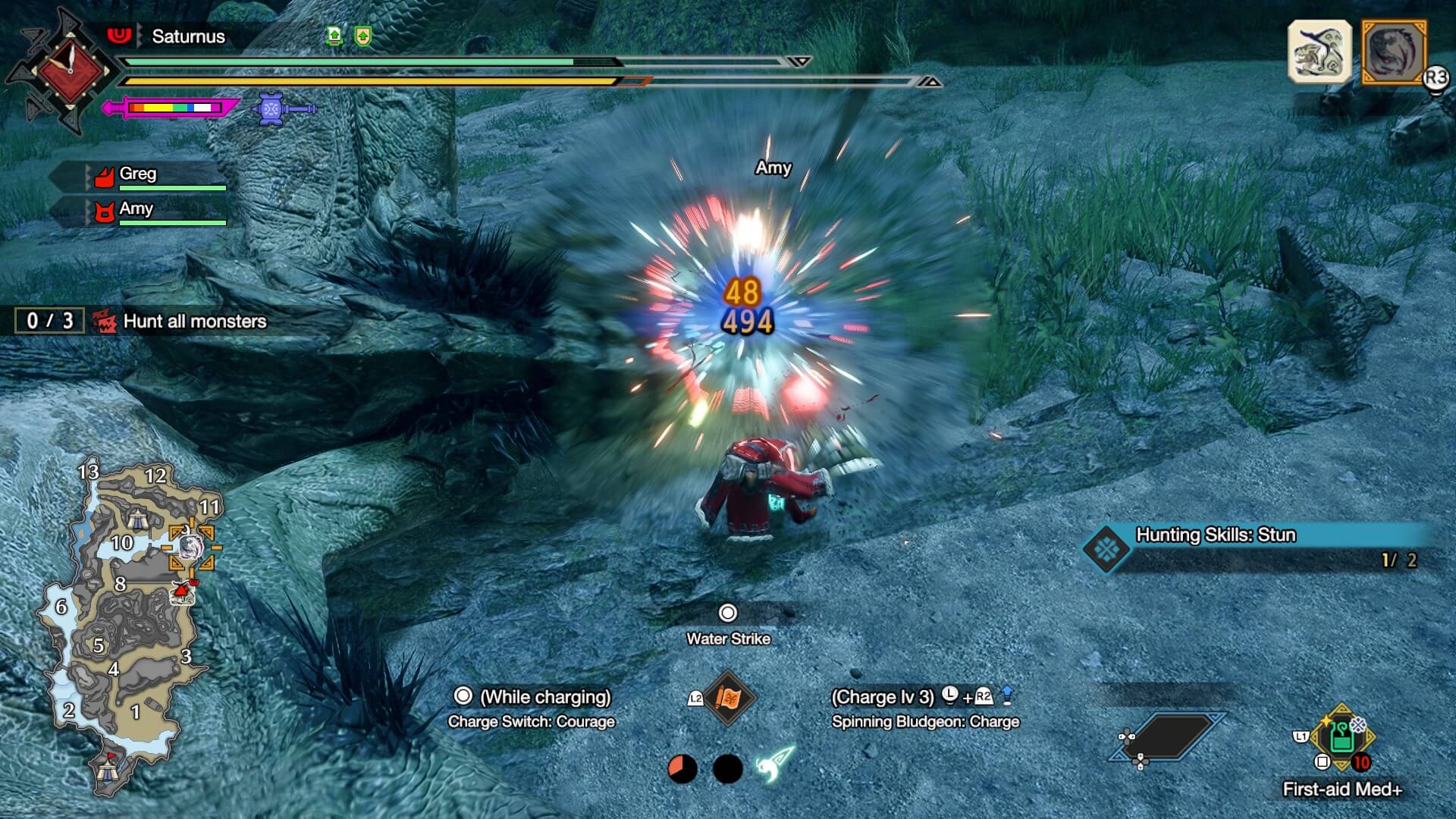
If there’s one part of hunting that I’m most happy about, it’s the balance changes for certain weapons. Hammer, my main weapon of choice in Rise, now has more options when it comes to Switch Skills — Courage style is actually fun to use now thanks to the quicker charge times. Certain weapons like Longsword have also seen some nerfs, balancing things out a little (though it’s still an incredibly strong choice for hunts).
All weapons have also received a number of new Switch Skills, leaning further into the style system of the Monster Hunter Generations titles. It’s even possible to use multiple sets of Switch Skills on hunts via the Switch Skill Swap system. For a lot of weapons, however, the main use of this system is just to access a single buff skill on one set, before switching back to your main loadout.
If you’re not up for playing with others but would still like some extra help, Sunbreak introduces Follower Collab Quests. These are offered to you during the course of Master Rank, letting you team up with certain NPCs in specific quests. Both new and old characters from Rise are represented, each with varying AI quirks and weapon choices. It’s an OK addition, though it’s hard to care about some of the NPC choices — many of the Sunbreak Partner characters have little to no connection to the main story.
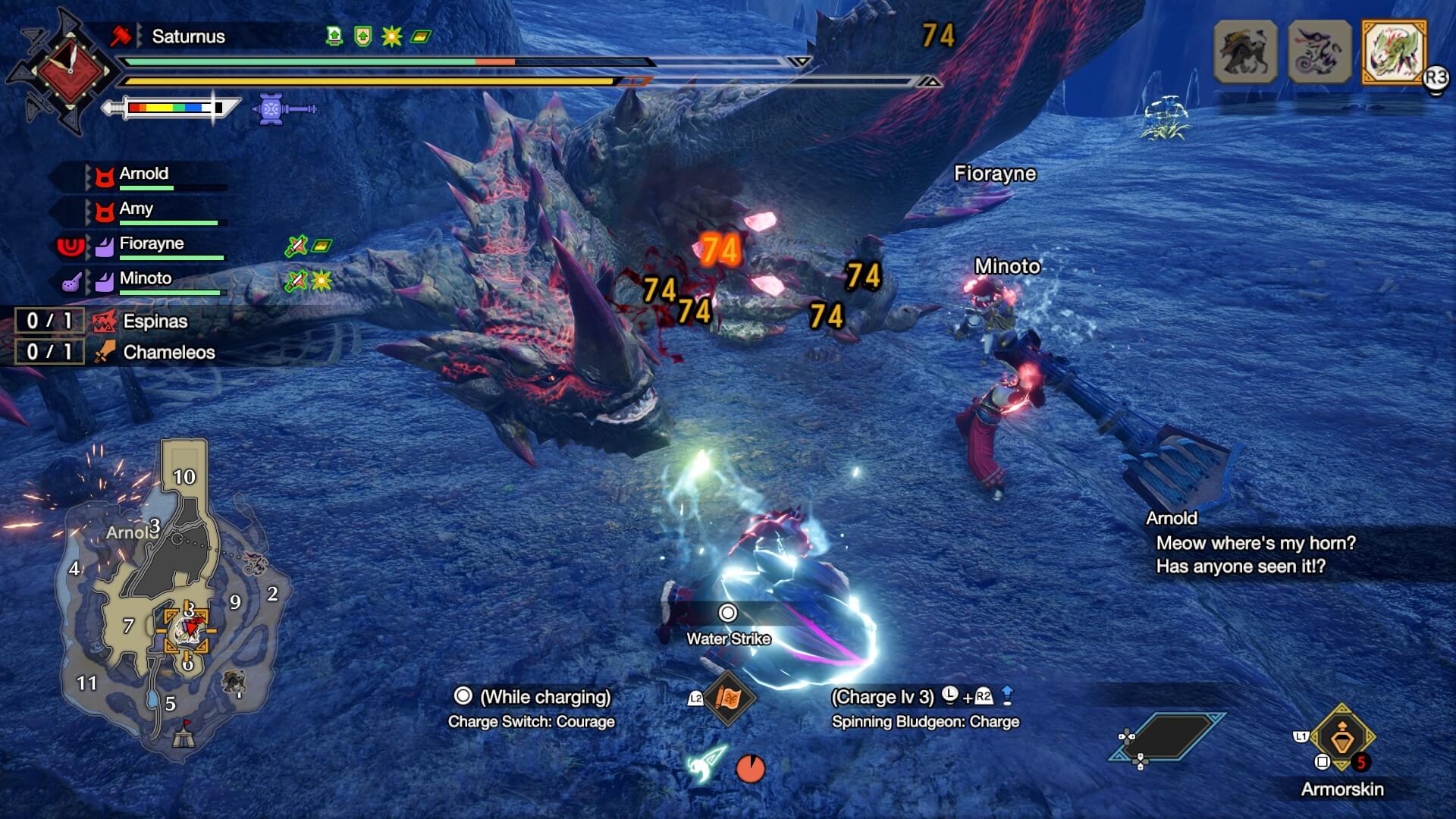
Better Endgame, But Still Missing Something
Going into Sunbreak, I was really hoping that the endgame would be vastly improved over base Rise. Well… it mostly is, if only because you have more choice over what to grind. Endgame in Sunbreak revolves around a new type of quest that pits you against powered-up versions of monsters, each having boosted heath, speed, and damage. Killing these monsters drops materials needed to upgrade most weapons to Rarity 10, the maximum rank of gear.
The advantage of this system is that you’re not locked to a specific monster while grinding for one weapon, since each upgrade item can be gained from multiple monsters. This does have the knock-on effect of essentially making regular quests useless in endgame since it’s still possible to gain regular materials from these buffed monsters as well.
Most of these quests are unlocked by increasing your Master Rank (which is thankfully uncapped after the main story at launch, unlike base Rise), with the majority of monsters available in their boosted forms. This does mean that you have the chance to fight versions of monsters that are usually considered weak (even in Master Rank), though none of them have new movesets or unique appearances.
Unfortunately, the RNG-heavy talisman system makes its return without any major changes. It works the same way as before, just with new options for higher-rank talismans featuring better decoration slots and abilities. It would have been nice to gain talismans from other sources or at least have some way of reducing the amount of RNG required to get something good. Mercifully, you can at least get talismans at a quicker rate via a new item easily obtained through the Argosy trade ship system.
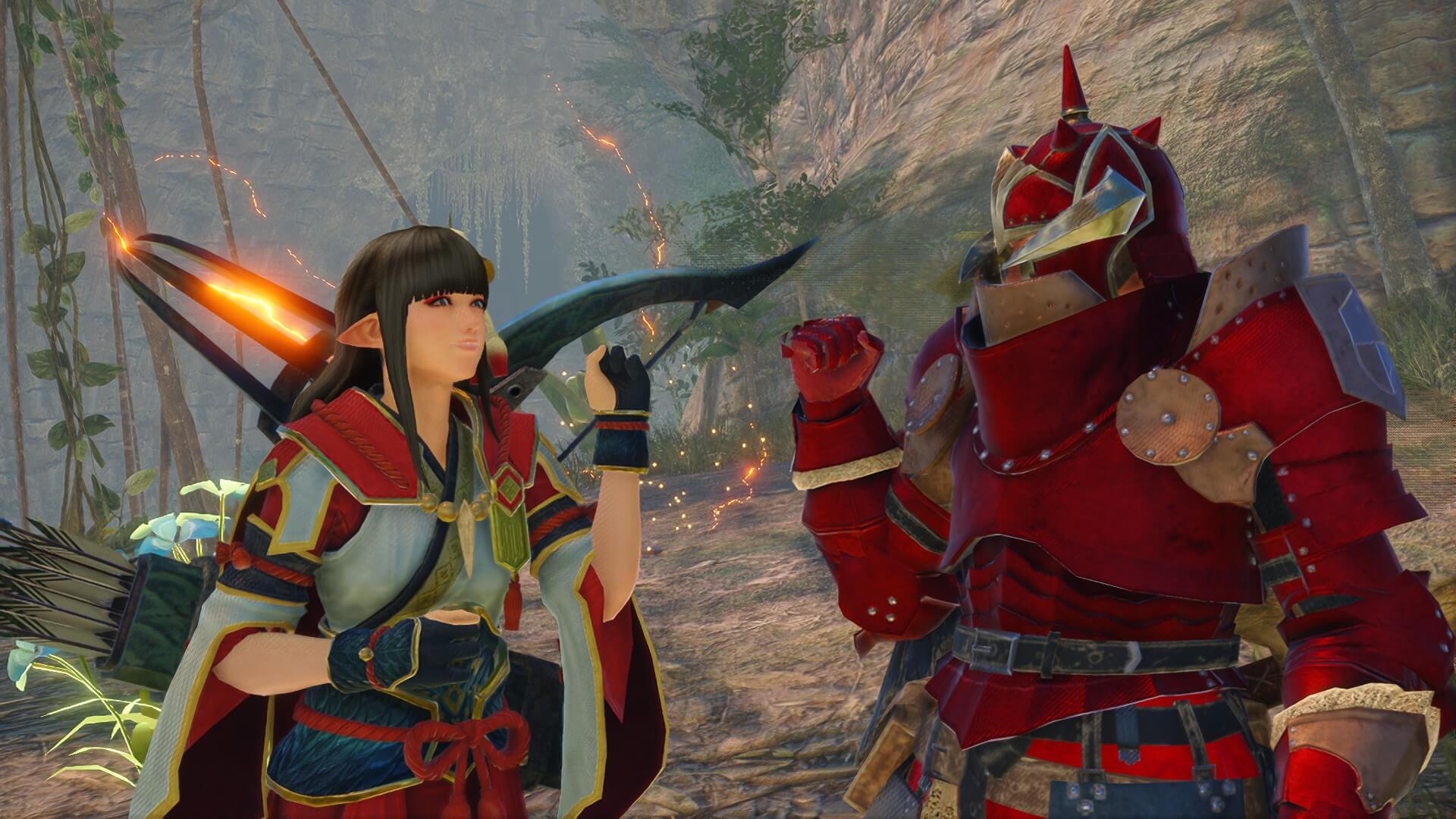
Monster Hunter Rise: Sunbreak | Final Thoughts
At the end of the day, Monster Hunter Rise: Sunbreak is a solid extension of the more arcadey experience offered by Rise. If you weren’t a fan of the direction the Monster Hunter series was going in before now then there isn’t much to change this, outside of potentially tougher monsters during the endgame.
TechRaptor reviewed Monster Hunter Rise: Sunbreak on Steam with a copy provided by the developer. The game is also available on Nintendo Switch.
Review Summary
Pros
- Fast-paced hunts
- Nice to see content from other Monster Hunter entries
- Endgame incentivises fighting a variety of monsters
Cons
- Talisman RNG
- Main story is still quite easy
- Small roster of new monsters
Have a tip, or want to point out something we missed? Leave a Comment or e-mail us at tips@techraptor.net
